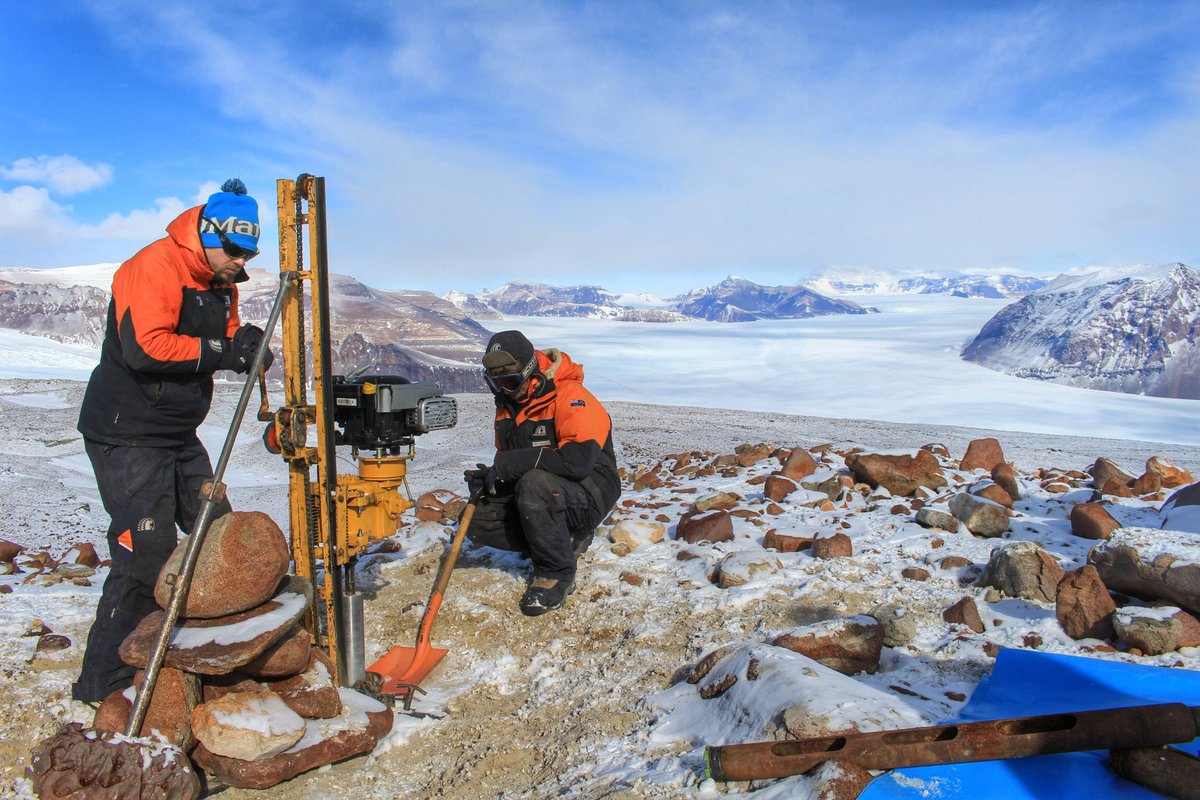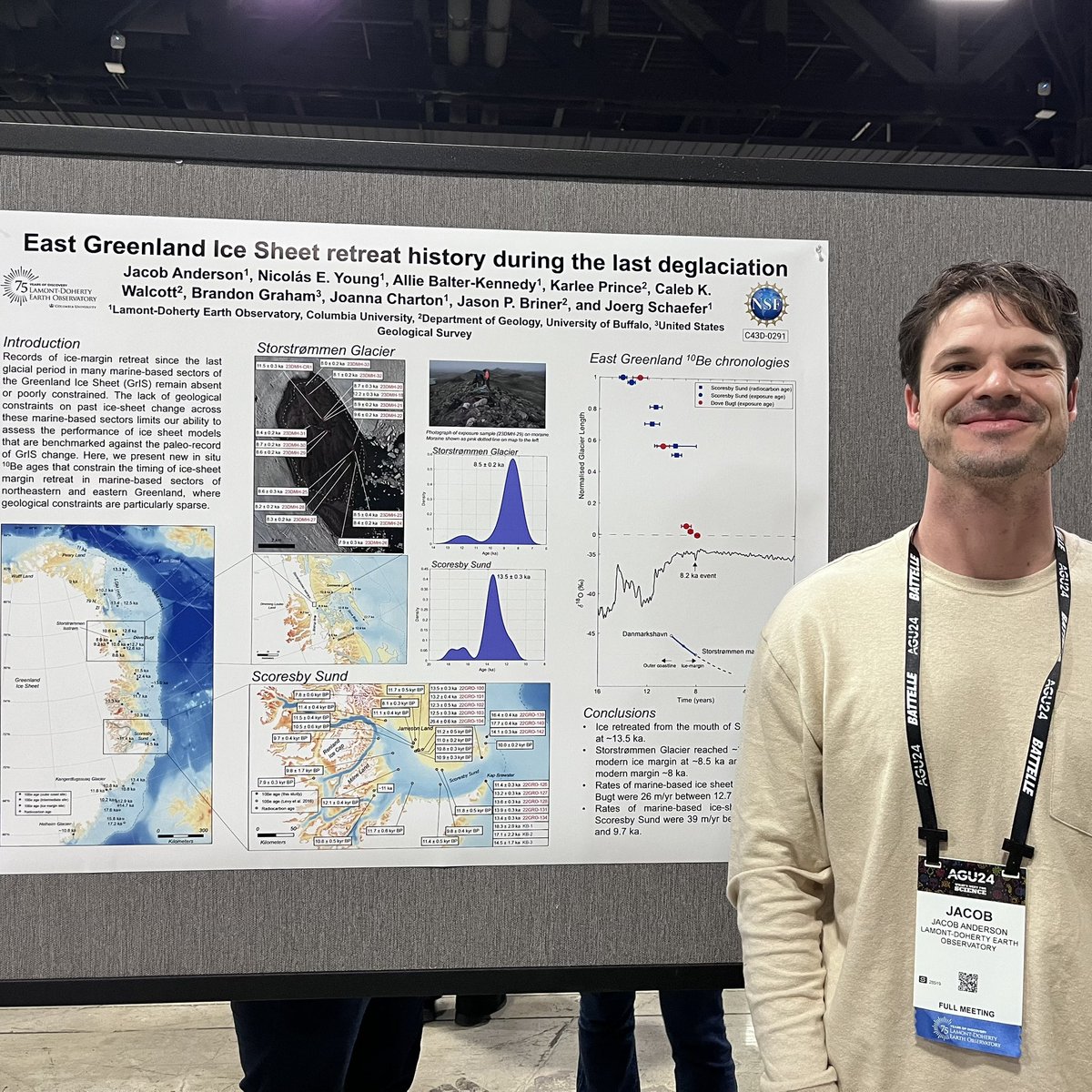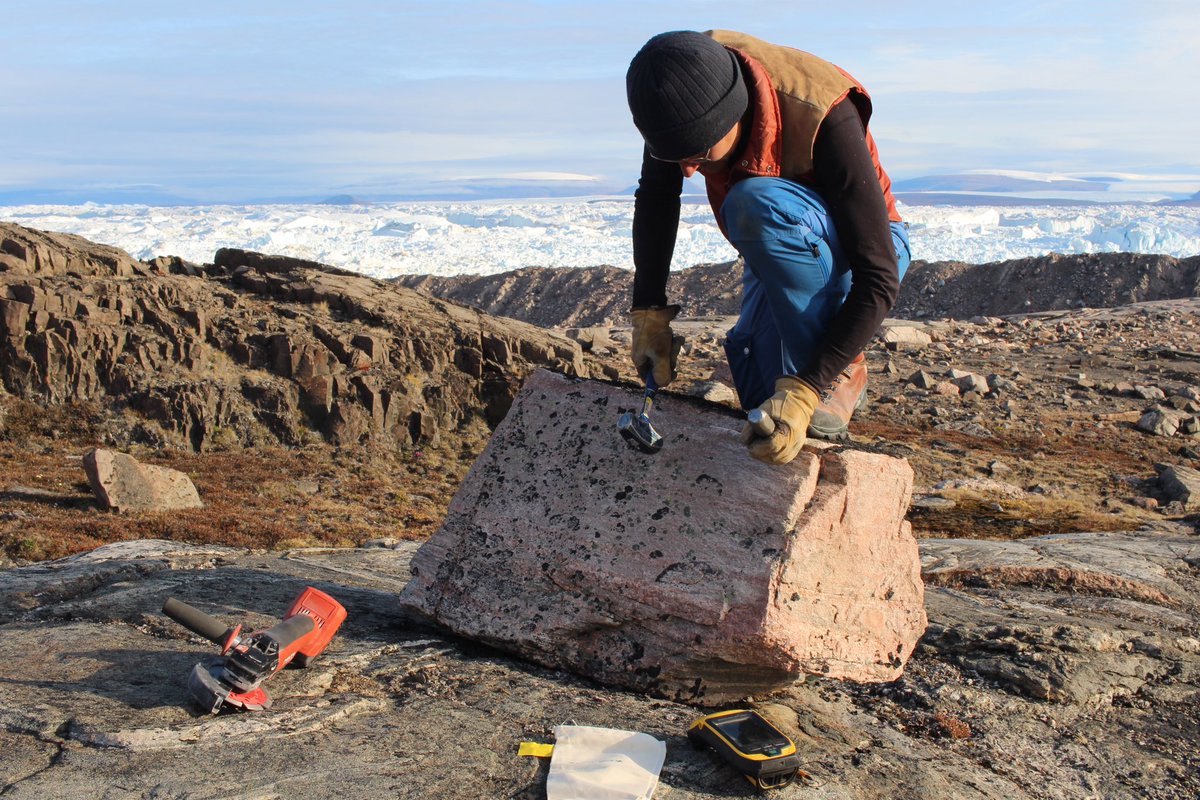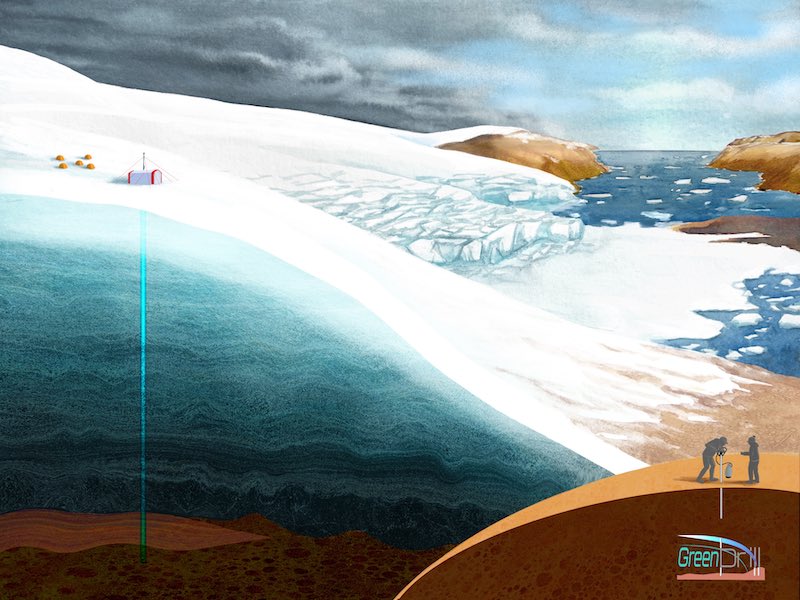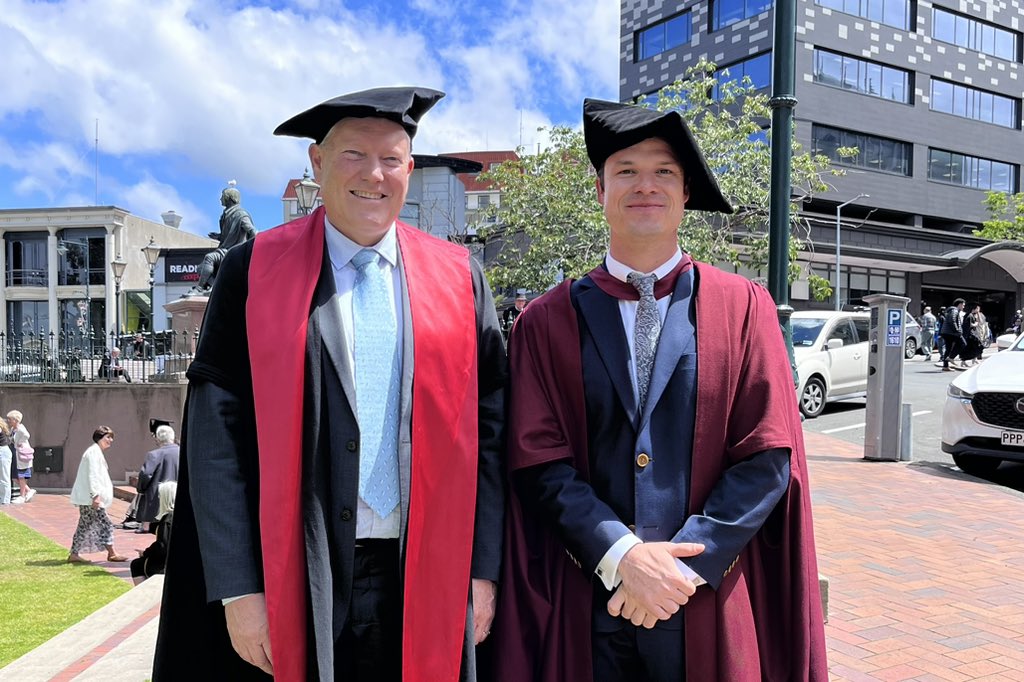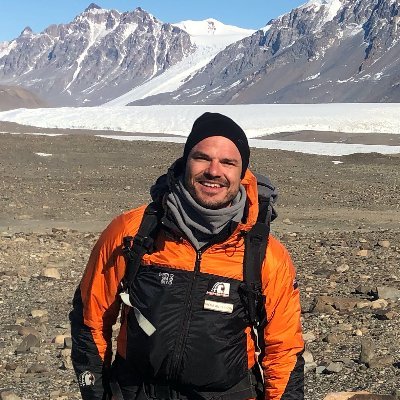
Jacob Anderson
@jacobthanderson
Followers
345
Following
1K
Media
123
Statuses
607
Earth and Climate Scientist at Lamont-Doherty Earth Observatory, Columbia University
New York, NY
Joined January 2013
Our new preprint is online in Climate of the Past: East Greenland Ice Sheet retreat history during the last deglaciation. We welcome any feedback! https://t.co/Eqc4EIqCPj
0
0
4
This work was a collaboration between @otago, @ANSTO, @CENIEH, @Livermore_Lab, @waikato, and others, and the field work was supported by @AntarcticaNZ
0
0
1
These cold, polar landscapes have some of the lowest erosion rates on Earth, and provide clues about landscape evolution and past changes in Antarctic climate. https://t.co/xZUztgyyf5
agupubs.onlinelibrary.wiley.com
Mean erosion rates of plateau bedrock are lower than those of cobbles embedded within the Sirius Group 10Be and 26Al depth profiles from a 2.95 m permafrost core in the Sirius Group yield an eros...
1
0
2
Continual exhumation of embedded clasts from within the Sirius Group results in the formation of an erosional lag deposit.
1
0
1
¹⁰Be & ²⁶Aldepth profiles from a 2.95 m permafrost core in the Sirius Group yield an erosion rate of 0.53 metres per million year.
1
0
0
We find bedrock erosions rates are lower than erratic boulders and embedded boulders and cobbles within Sirius Group sediments.
1
0
0
Ever wondered how ancient polar landscapes are preserved? Our new study in @JGREarthSurface from Table Mountain in Antarctica’s arid, frozen landscape reveals erosion rates using cosmogenic isotopes (¹⁰Be & ²⁶Al).
1
5
9
At #AGU24? Come by today and check out my poster (C43D-0291) on East Greenland Ice Sheet retreat during the last deglaciation. @LamontEarth @columbiaclimate @theAGU
0
2
4
It was great to share some insights about our @LamontEarth team’s expedition to northern Greenland recently on 1News. Highlighting some of our research about the Greenland Ice Sheet and its contribution to sea level rise. @columbiaclimate @Columbia
0
2
6
Our new paper on permafrost hydrogeology of Taylor Valley in Antarctica is now out in @theAGU GRL. Led by Valentina Romano, we provide insights from deep electrical resistivity tomography. https://t.co/MT2DRUuHmo
0
0
1
This summer we’ve been working in northern Greenland investigating rates of ice sheet retreat, and collecting bedrock cores to determine the sensitivity of the Greenland Ice Sheet to changing climate. @LamontEarth @columbiaclimate @Columbia
1
4
27
I’m excited to share that I’ll be starting a new role as a postdoctoral research scientist at @LamontEarth of @Columbia in New York. I’ll be working on projects that test the sensitivity of the Greenland Ice Sheet, and evaluate the ice sheets contribution to sea-level rise.
0
1
9
Craig Cary was one of the most enthusiastic and inspiring scientists I've had the pleasure of knowning. I will remember our many convserations in remote Antarctic field camps and in the lab with great warmth. Craig was an inspiration to myself and so many others. Thank you Craig.
What can the tiniest organisms on the planet teach us about how we can respond to a changing #climate?
1
2
15
Celebrated receiving my Doctor of Philosophy this week at @otago! Grateful for all the support during my PhD.
0
0
3
Thanks to @ToshiFujioka and all the co-authors. @otago @CENIEH @ANSTO @Livermore_Lab @gnsscience @AntarcticaNZ
0
0
1
We suggest a causal relationship of cold-based glacier advance and retreat that is controlled by an increase in moisture availability during retreat of sea ice and perhaps the Ross Ice Shelf, and conversely, a decrease during times of sea ice and Ross Ice Shelf expansion.
1
0
2
The surface cobble ages, and permafrost processes reveal Taylor Glacier advances during MIS 5 were non-erosive or mildly erosive, preserving the underlying permafrost sediments and peppering boulders and cobbles upon an older, relict surface.
1
0
0
The 26Al/10Be ratios of permafrost sediments at both lower Wright Valley and Pearse Valley, show these sediment repositories have experienced multiple glacial-interglacial cycles achieved through the recycling of sediments for at least 1.2 Myr.
1
0
0
This schematic depth profile shows the evolution of a cosmogenic nuclide depth profile over time with the added feature of a near-constant 10Be concentration in a cryoturbated active-layer above ice-cemented permafrost.
1
0
0
Depth profiles from the lower Wright Valley permafrost core exhibit near-constant concentrations with depth, and indicate the sediments were deposited after the Last Glacial Maximum.
1
0
0





